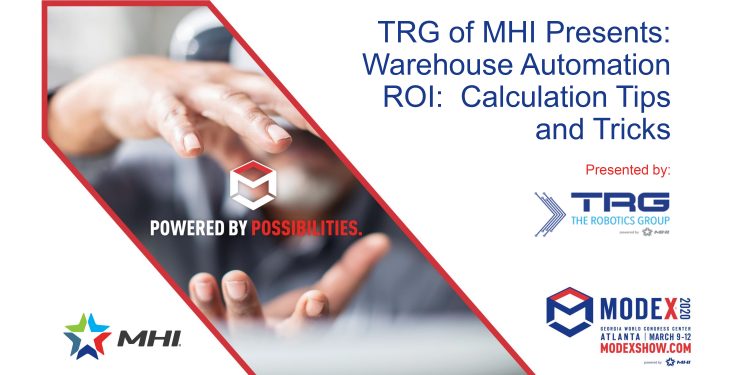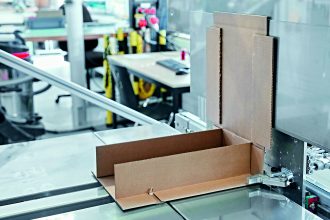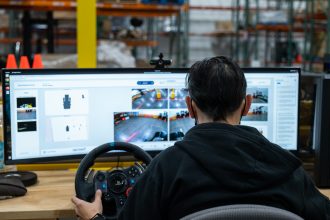Calculating The Potential ROI For A Robotic Installation

When determining the potential return on investment (ROI) in an automated material handling solution such as robotics, most projects are evaluated based on net present value (NPV), minimum acceptable rate of return (ROR), the payback period, and other methods. Yet, when it comes to robotics — which is still very much an emerging technology within the warehousing and distribution space — the estimates and the actuals may not pencil out.
That’s why, at MODEX 2020 this past March in Atlanta, members of The Robotics Group of MHI presented a free, on-floor seminar to attendees entitled “Warehouse Automation ROI: Calculation Tips and Tricks.” Recorded for those who were unable to attend, or who wish to view the presentation a second time, the 45-minute session features a panel discussion of how to also incorporate labor variables such as turnover, absenteeism, and onboarding costs into the justification for a robotics investment.
Panelists included both end users, integrators, and robotics suppliers. They first explored the lack of available workforce and the cost and effort required to attract, hire, train, and retain employees to work in warehousing. With at least a third of new hires leaving within a few months and as many as 50 percent not showing up day-to-day, an investment in robotics can look that much more appealing. Productivity rates between robotics and personnel are often similar; it’s avoiding the costs associated with employing a workforce that can be somewhat inconsistent and takes time to get up to speed that often plays into a decision to invest in automated solutions like robots.
When presenting the proposal for a robotic automation investment, the panel emphasized first explaining to stakeholders why current labor cannot meet set goals and expectations for productivity, throughput, accuracy and other key performance indicators (KPIs). When selecting robotics as a potential solution, companies are advised to start small — with a pilot project to prove the concept — something that can’t always be done with other forms of automation. This provides an opportunity to determine how the robots might fit into existing operations, learn from outcomes, and make modifications and refinements to the concept.
Additionally, the panelists urged companies to bring representatives from the finance team into the facility for which the robotic installation is proposed. This allows them to see the operation’s struggles with staffing consistency, throughput, and meeting service level agreements as opposed to only seeing the potential cost of the investment on paper. Getting the finance team involved as early in the process as possible often helps smooth the way to securing buy-in for the robotic purchase.
Looking for more information about integrating robots into your operation? There are a variety of resources available on TRG’s webpage.



